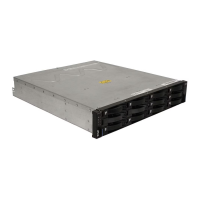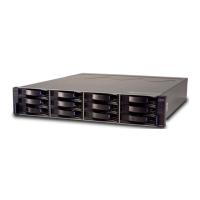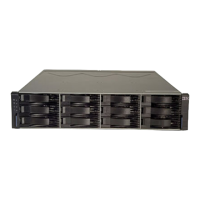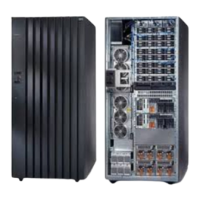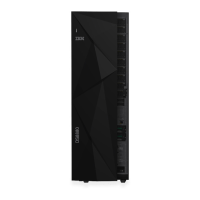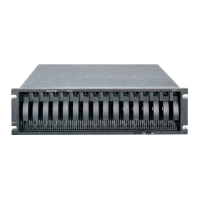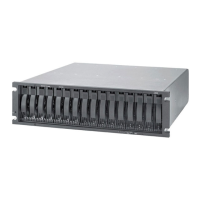7914DS3KPlanning_090710.fm Draft Document for Review March 28, 2011 12:24 pm
68 IBM System Storage DS3500: Introduction and Implementation Guide
With high throughput workload, the focus is on moving larger but fewer I/Os. This workload is
generally sequential in nature.
The total of all the segments for one pass of all the back-end data disks is a
stripe. So, large
segment sizes that can equal the I/O size might be desired to accomplish the higher
throughput you are looking for. For high read throughput, you want to have large segments
(128 K or higher) to get the most from each stripe. For example if the host I/O is 512 KB, and
the write is to a RAID 10 array, you want to use a segment size of 512 KB to limit the disk
operations as much as possible.
However, when the workload is high writes, and we are using RAID 5, we can use a method
known as
full stripe (stride) write, which can work well to improve your performance. With
RAID 5 the parity is based on the value calculated for a stripe. As discussed earlier in 3.3.2,
“Understanding RAID types” on page 50, when the I/O being written is spread across the
entire stripe width, no reads are required to calculate the parity; and the I/O completes with
fewer back-end I/Os being required.
This design can use a smaller segment size to align the host I/O size with the size of the
stripe width. For instance with our previous example, if the array is a 4+P RAID 5 you want to
use a 128 KB segment size to achieve a full stripe write. This type of management requires
that very few host I/Os not equal a full stripe width.
3.3.9 Media scan
Media scan is a background process that checks the physical disks for defects by reading the
raw data from the disk and writing it back, which detects possible problems caused by bad
sectors of the physical disks before they disrupt normal data reads or writes. This process is
sometimes known as
data scrubbing.
Media scan continuously runs in the background, using spare cycles to complete its work.
The default media scan is for a scan every 30 days, that is, the maximum time media scan will
have to complete the task. During the scan process, the DS3500 calculates how much longer
the scan process will take to complete, and adjusts the priority of the scan to ensure that the
Best practice: In the high throughput environment, you want the stripe size to be equal to,
or an even multiple of, the host I/O size.
Tips: The possible segment sizes available are 8 KB, 16 KB, 32 KB, 64 KB, 128 KB,
256 KB, and 512 KB:
Storage Manager sets a default segment size to 128KB.
For database applications, a segment size of 128 KB or 256KB (for data warehousing)
have shown to be more effective.
In a large file environment, such as media streaming or CAD, 128 KB or more are
preferable with a focus on full stripe writes.
For a Web server or file and print server, the a range of 64KB to 128KB should provide
best results.
Note: A performance testing schedule must be undertaken in the environment before
going into production with a given segment size. Segment size can be dynamically
changed, but only by rewriting the data, which consumes bandwidth and impacts
performance. Plan this configuration carefully to avoid having to reconfigure the options
chosen.

